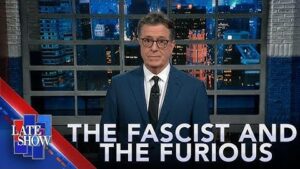
When you make purchases through our links we may earn a small commission.

Photo Credit: Karina Tess
Put It On Your Wall: CanvasOnDemand.com
Support thesmokingchair.com through Patreon.
The Second Amendment of the United States Constitution has been a subject of intense debate since its inception, with advocates emphasizing the right to bear arms and opponents calling for stricter regulations to address the evolving nature of society. A careful examination of the language of the Second Amendment reveals a nuanced perspective that supports the citizens’ right to own firearms, but not without the imposition of reasonable regulations.
The Second Amendment Text
The Second Amendment states: “A well regulated Militia, being necessary to the security of a free State, the right of the people to keep and bear Arms, shall not be infringed.” While this language may seem straightforward, it is crucial to consider the historical context and intent behind the amendment.
The Role of a Well-Regulated Militia
The framers of the Constitution were deeply concerned about the potential for tyranny and the need for a well-regulated militia to ensure the security of a free state. The mention of a militia in the Second Amendment indicates a connection between the right to bear arms and the collective defense of the nation.
Appropriate Regulations
The phrase “well regulated” in the Second Amendment underscores the framers’ recognition that rights should be exercised within a framework of responsible governance. The concept of regulation, as understood in the 18th century and beyond, implies the imposition of rules and standards to ensure the safe and responsible use of firearms.
This recognition of the need for regulation opens the door to a balanced approach, acknowledging the individual right to bear arms while allowing for the establishment of sensible regulations. Such regulations may include background checks, waiting periods, restrictions on certain types of firearms, and measures to prevent the acquisition of firearms by those with a history of violence or mental illness.
Historical Precedents and Judicial Interpretations
Throughout American history, the judiciary has played a crucial role in interpreting the Second Amendment in the context of changing societal norms. Landmark cases such as District of Columbia v. Heller (2008) and McDonald v. Chicago (2010) have affirmed an individual’s right to bear arms for self-defense, while also recognizing the government’s authority to enact reasonable regulations.
Final Thoughts
The Second Amendment is a vital component of the American constitutional framework, reflecting the balance between the right of individuals to bear arms and the necessity for appropriate regulations. While the language of the amendment unequivocally supports the right to bear arms, the phrase “well regulated” emphasizes the importance of responsible governance.
In today’s complex and dynamic society, striking the right balance between individual rights and public safety is paramount. As discussions surrounding gun control continue, a thoughtful and measured approach that considers both the constitutional right and the need for responsible regulations will contribute to a more comprehensive and effective framework for addressing the challenges of gun ownership in the 21st century.
You’ll get more articles like this – and our favorite promotional offers delivered straight to your inbox.
By submitting this form you agree to our terms and conditions. You can unsubscribe at any time.

NAUGHTY CHRISTMAS LINGERIE TRY-ON HAUL *HOT* | Lauren Alexis


Video: Mira Shape Knitted TRANSPARENT Try-On. YES or NO?

GFYG: MarieMur – Sexy Lingerie Try On Haul!



























